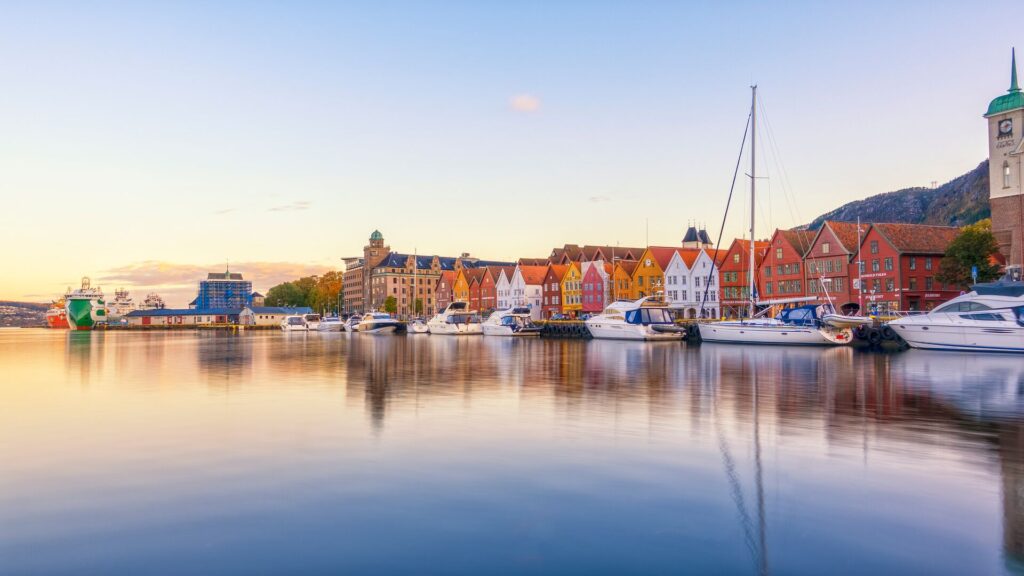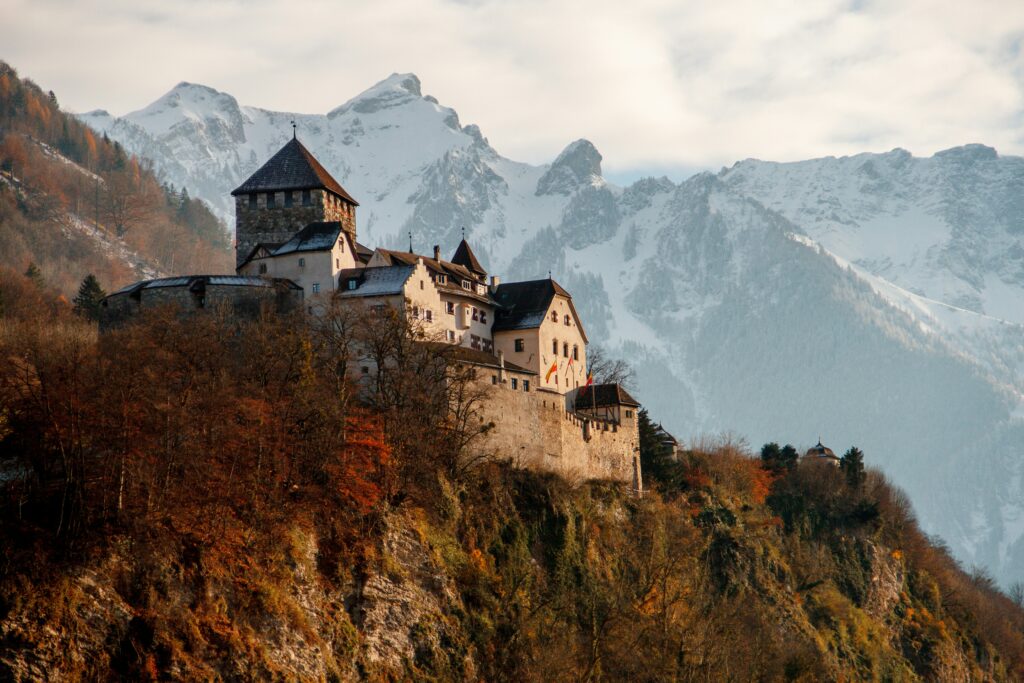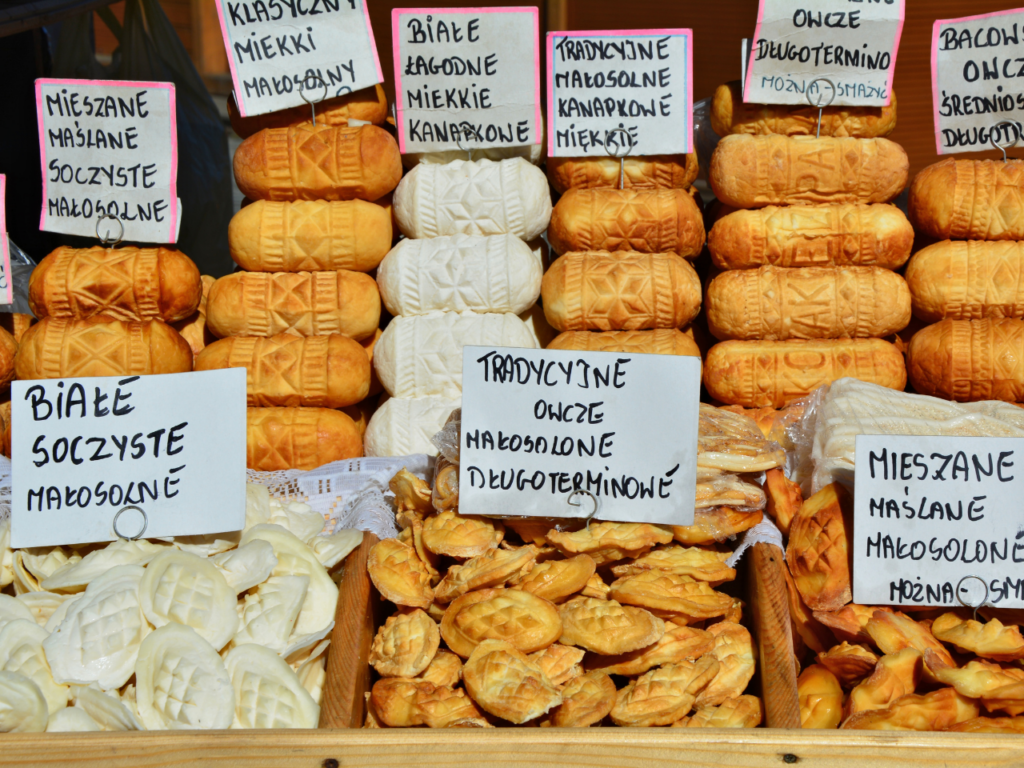Few cities have such a rich heritage as the history of Sarajevo, resulting in a capital where East truly meets West. Known by many for the gunshot that led to the start of World War I, this is just one drop in the historical ocean of Sarajevo, the capital of Bosnia and Herzegovina. From the Ottoman Empire, through Austro-Hungarian rule to the present day, legacies of Islamic Ottoman, Jewish, Christian Orthodox and Roman Catholic religions are apparent all around.
Born and raised here, Samra, a Local Expert knows Sarajevo like the back of her hand. She tells us why she loves the city so much and walks us through some of the great landmarks that tell the rich history of Sarajevo.
Why Sarajevo?
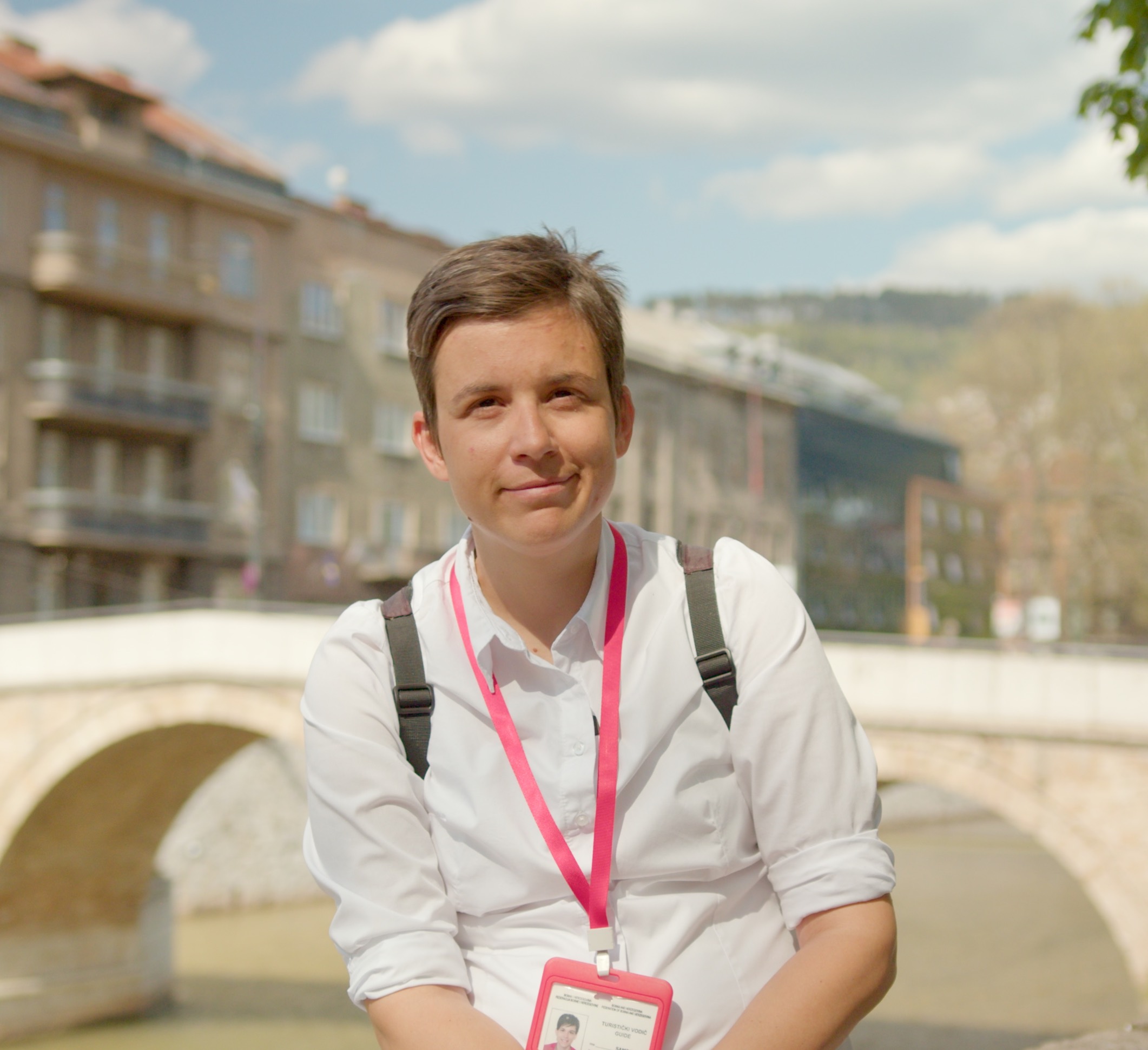
Bosnia and Herzegovina’s bustling capital can be defined by what locals call ‘the Sarajevo spirit,’ a fascinating and mostly harmonious mix of religions and cultures.
“What I love mostly about Sarajevo is that the story of the city is different to any other,” says Samra.
“Historically it’s a mixture between East and West in terms of Ottomans and Austro Hungarians. And still nowadays one can argue we’re kind of in the middle between East and West as influences. And it’s religiously mixed. Within 200 square meters you can find four different religious buildings. There’s a reason why we’re nicknamed the Jerusalem of Europe or Little Jerusalem.
“I also adore the way of life, the vibe that Sarajevo gives. It’s always full of people and we still very much keep the social aspect of life on basically daily basis.”
For travel inspiration: Bosnia and Herzegovina destination guide
East visibly meets West – Ferhadija Street
“My favorite spot in the city is Ferhadija Street,” says Samra. “It really shows what sets us apart in terms of capital cities and highlights the history of Sarajevo.”
A pedestrian street, in the middle there is a huge painted compass with the words ‘Sarajevo Meeting of Cultures’.
“Stand on the compass and look East and you’re looking at purely Ottoman architecture from the 16th century,” she says. “Look West and all the buildings are from the Austro-Hungarian period. This is the best spot to see the huge difference between the cultures. It’s so clearly visible, and very unique.”
If you stroll down Ferhadija street at noon, you can listen to the bells from the Catholic cathedral and the Serb-Orthodox church mixing with the Muslim call for prayer. They call this the ‘sound of Sarajevo’.
Discover this on: Eastern Capitals & The Dalmatian Riviera, Treasures of the Balkans
Founded by the Ottoman Empire – Baščaršija
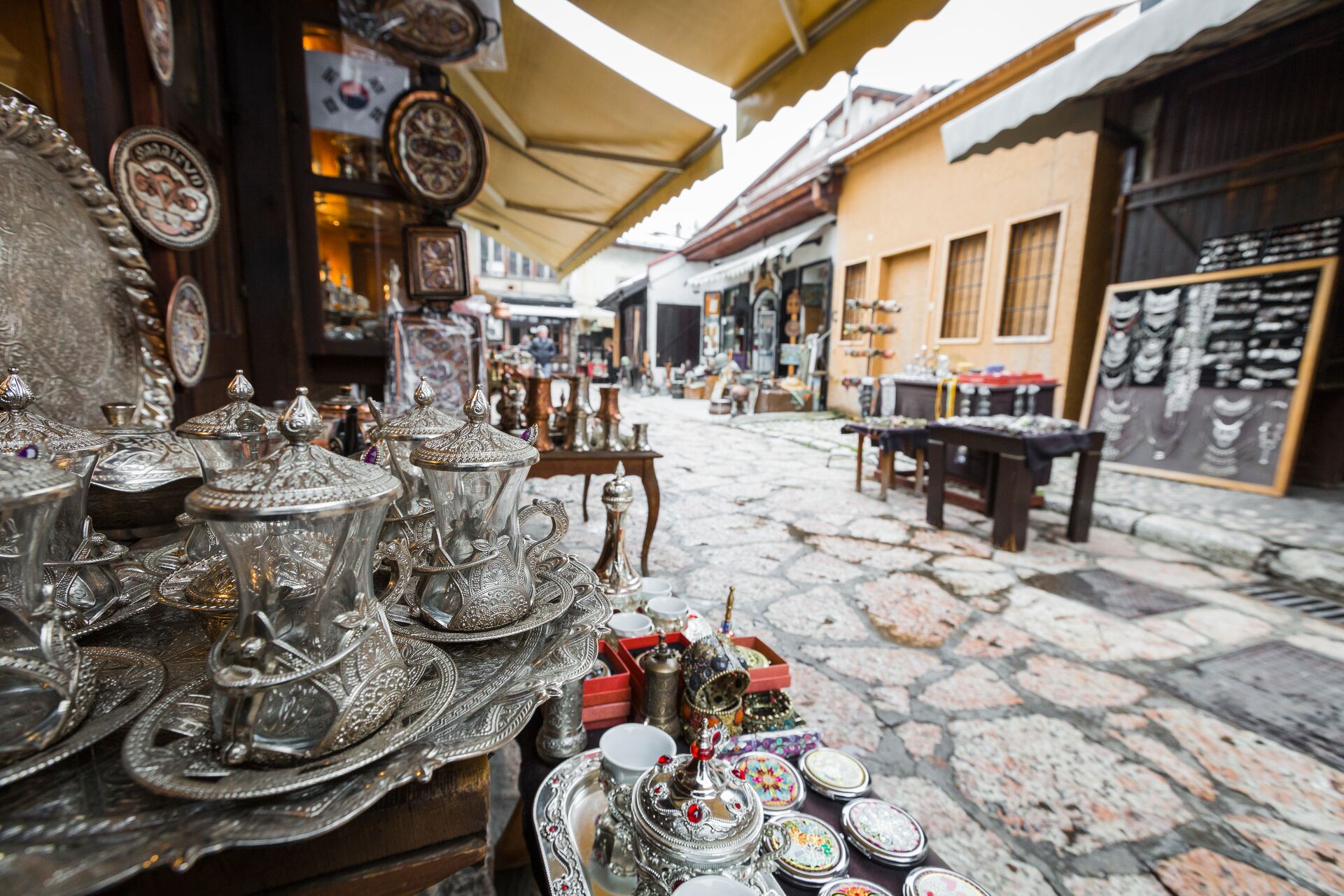
The city of Sarajevo was founded in the 15th century by the Ottoman Empire. A center of commerce, it thrived as a center of silk trading. Filled with minarets and church towers, the city became a haven for anyone who wished to escape Europe’s Catholic Inquisition.
The city grew around a Turkish-style marketplace. Named Baščaršija this is the historical and cultural center of the city, where visitors can explore the bustling bazaars and distinctly oriental streets, taking a step back in time to the 16th century.
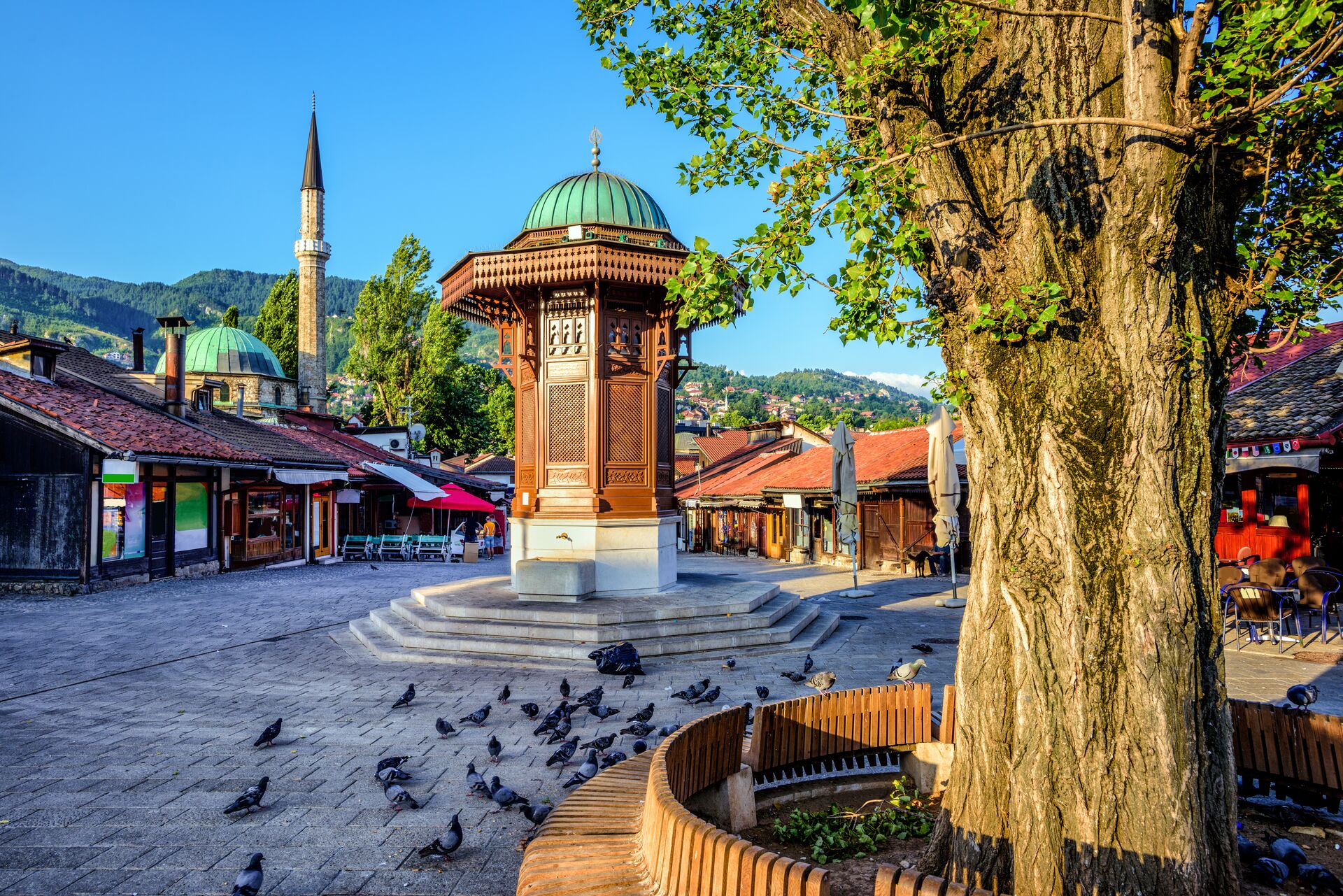
“Baščaršija is home to an important symbol of Sarajevo, the Sebilj. An Ottoman style water fountain, it is very significant.” Samra says. “In the original Ottoman version there was a person who was inside filling water – handing you fresh water is a sign that welcoming you to the city.” The current brown structure with a green dome, dates from the 19 century Austro Hungarian period. “This fountain is a little bit more advanced. It’s self-service so you can welcome yourself into the city.”
You might also be interested to read: 5 things to see in and around Sarajevo
The building of Orthodox churches – Cathedral Church of the Nativity of the Theotokos
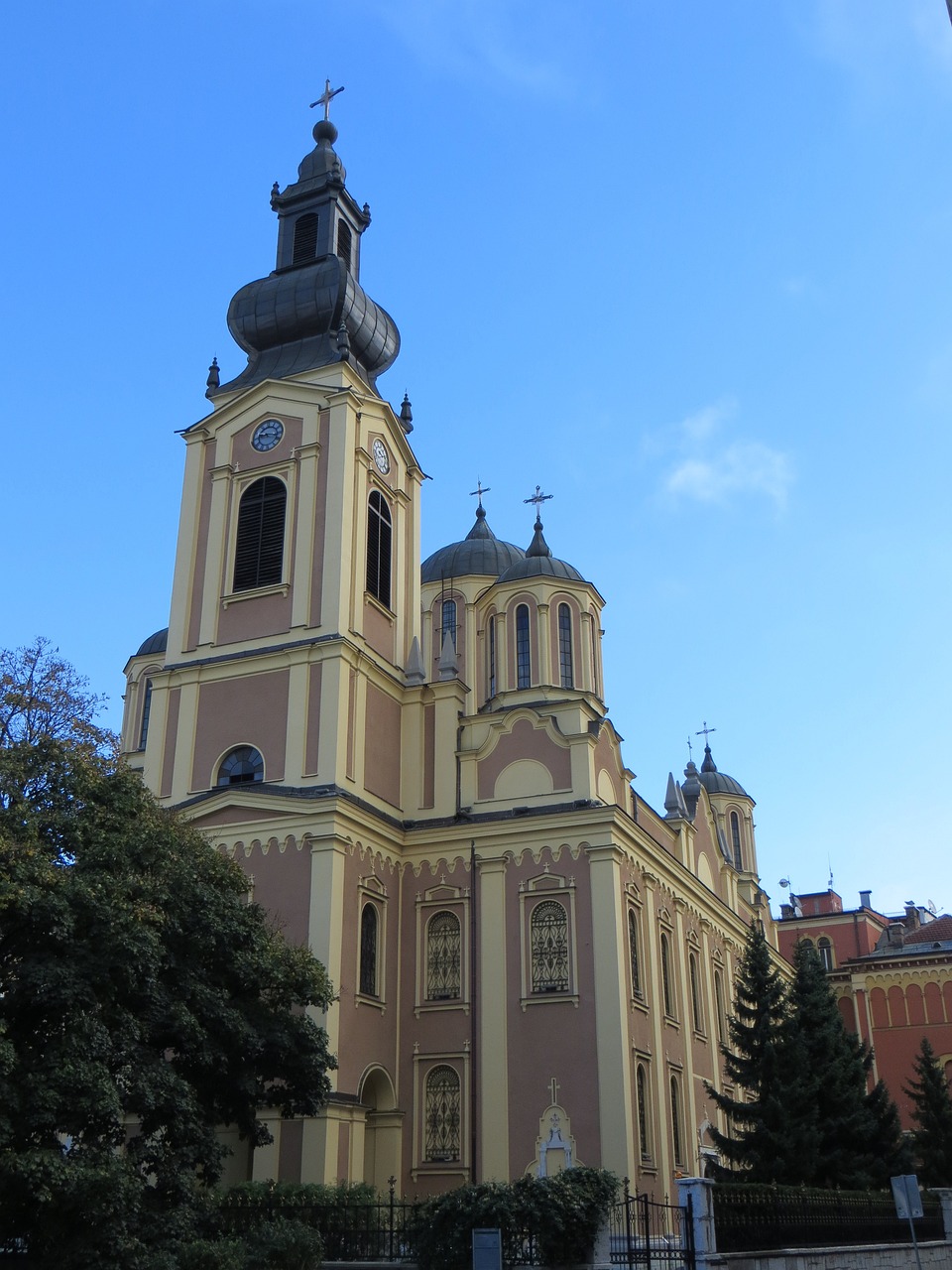
In the 16th century, Sarajevo’s first Orthodox church appears in historical records. When Queen Isabella of Spain expelled Sephardic Jews in 1492, thousands found refuge in Sarajevo, earning it the nickname ‘Little Jerusalem.’
The Cathedral Church of the Nativity of the Theotokos is an impressive sight and testament to these times. Standing out high on the city’s skyline, it’s the largest Serbian Orthodox church in Sarajevo and one of the largest in the Balkans.
“Built towards the end of the Ottoman period of 19th century between 1863 and 1868, this Orthodox church was initiated by the local people,” says Samra. “We have much older Orthodox church, however it was too small to welcome all those who wanted to attend the prayer. So, a bigger church was built, which is the spectacular building you see today.”
You may also enjoy reading: Cairo: the trans continental capital of culture
An icon of Sarajevo – the Gazi Husrev Beg Mosque
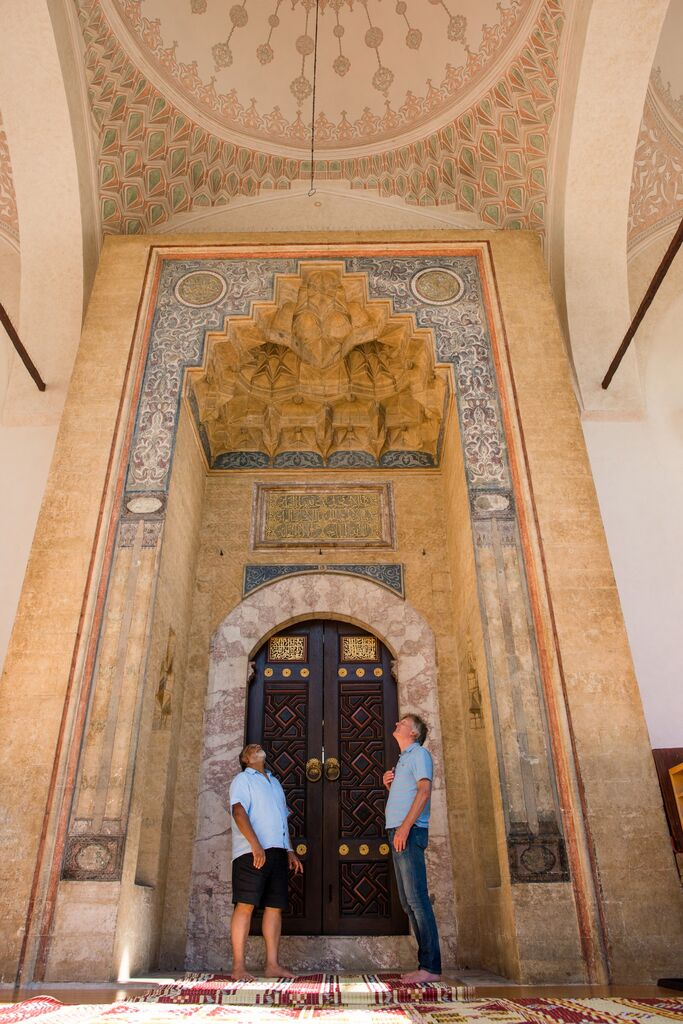
A 16th-century Ottoman masterpiece, the Gazi Husrev Beg Mosque is considered an icon of the city. A key figure in the history of Sarajevo, the city was controlled by Gazi Husrev Beg from 1521 to 1541, and he commissioned many of the mosques, hammams and bazaars. Gazi Husrev Beg also presided over one of the city’s most prosperous ever periods.
“Built in 16th century in 1531, the Gazi Husrev Beg Mosque serves Sarajevo, but it is also the central mosque for the whole country,” says Samra. “This is actually one of the rare mosques in the world which still keeps the tradition of a live call to prayer. Five times a day, the official climbs the 45-meter-high minaret, exits to the balcony and performs the call to prayer.
“Nowadays with the advantages in modern technology this has become a rare thing to see. Mostly it’s done with a recording through speakers. So, this mosque is unique in that it stays with the tradition, a testament to our city’s rich religious heritage.
You may also enjoy: Curious travelers will love these museum-rich cities in September
The Austro-Hungarian Empire
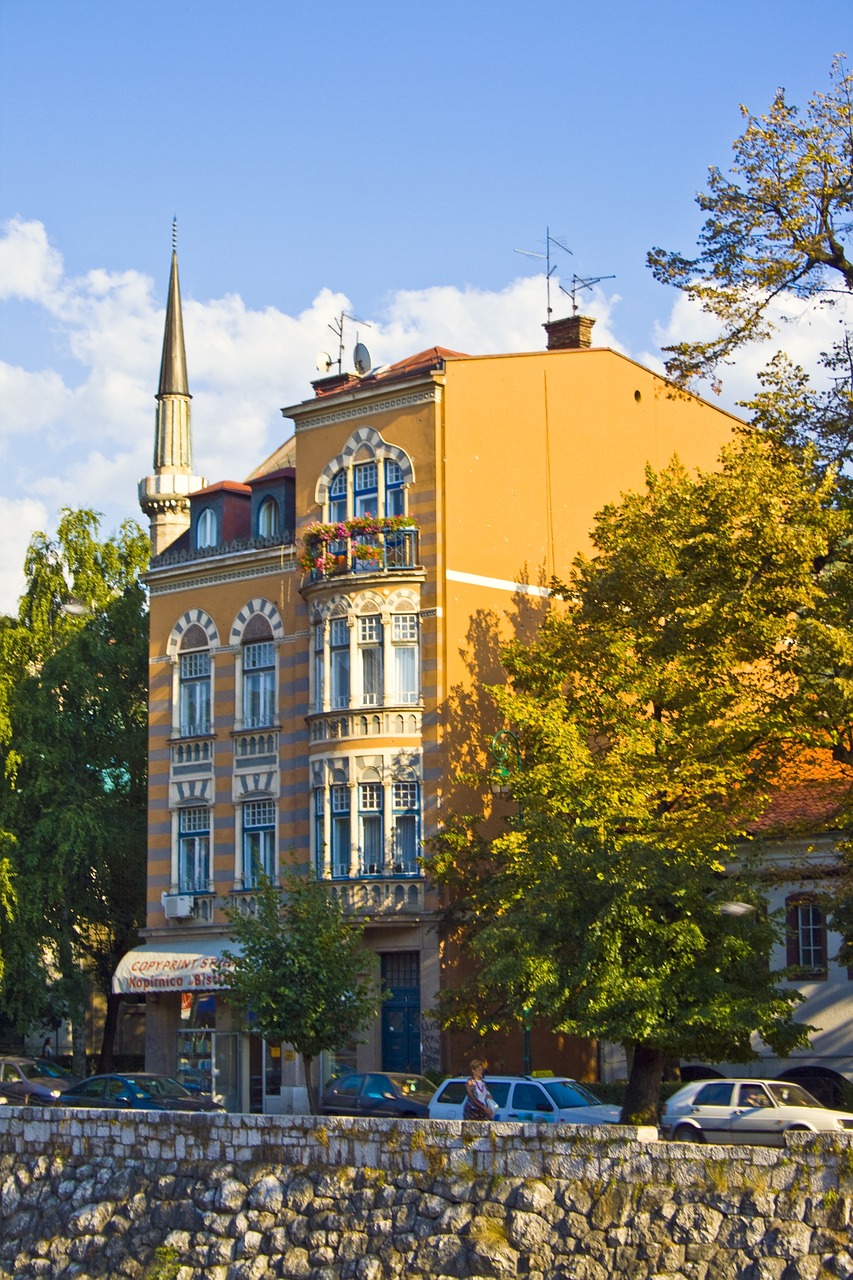
In 1878, Sarajevo and the rest of Bosnia-Herzegovina were annexed to the Austro-Hungarian Empire, following the Russo-Turkish War of 1877–78. Although Austro-Hungarian rule was relatively brief (1878-1918) their legacy in the history of Sarajevo is highly visible through numerous beautiful buildings.
While the narrow streets of Sarajevo’s Old Town feel distinctly Oriental, walk just a few minutes to the Miljacka River, you’ll suddenly feel as if you’ve stepped into Central Europe.
Austria-Hungary also rapidly modernized Bosnia, building the first power plants, the first National Museum and the first asphalt roads. And over the several decades Sarajevo’s population boomed.
You may also enjoy: These history experiences will expand your knowledge of the ancient world
Sarajevo Cathedral
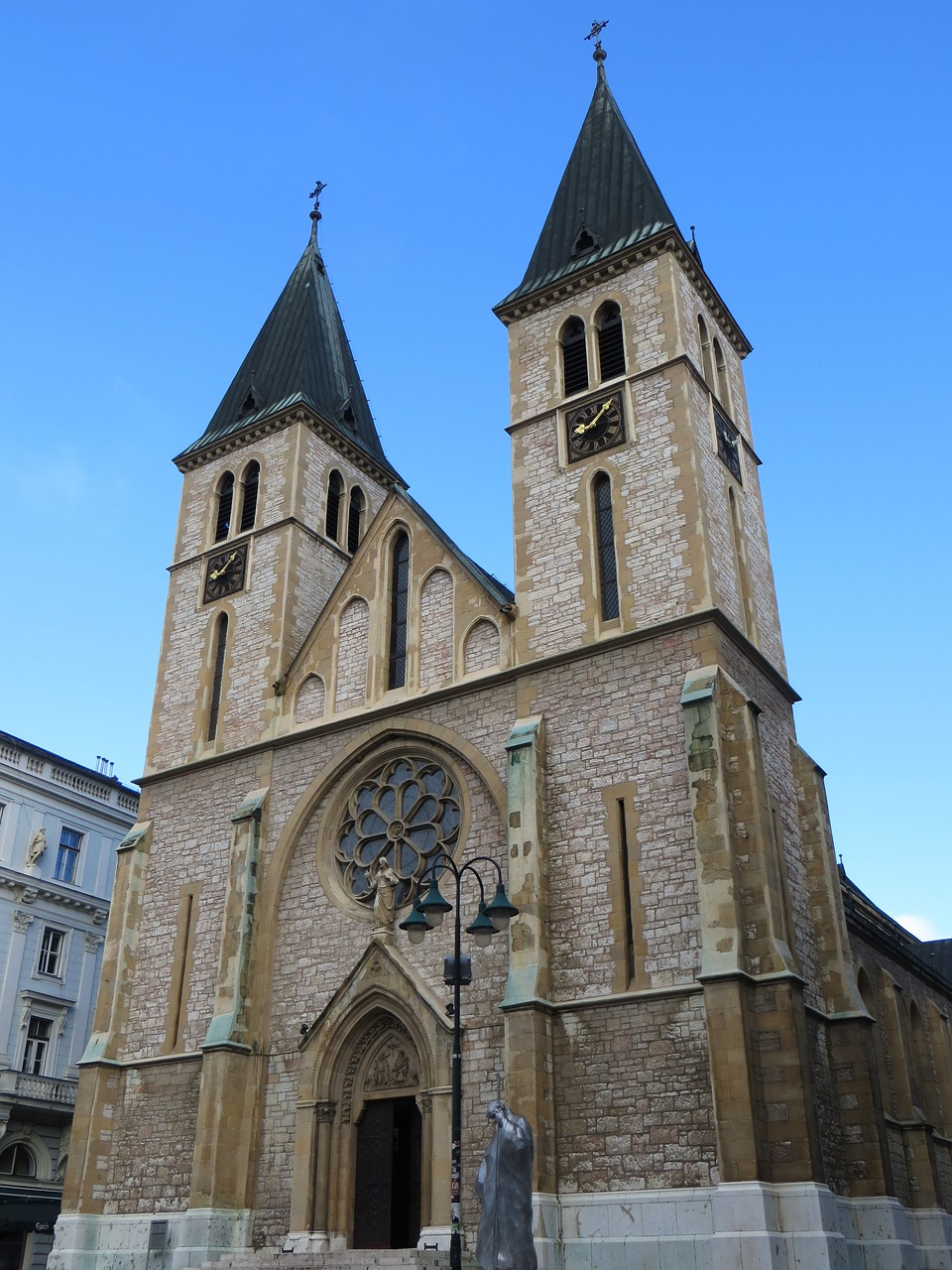
A true testament to Austro-Hungarian times is the spectacular Sarajevo Cathedral. “The Roman Catholic cathedral Sacred Heart of Jesus Christ, or as everyone in Sarajevo simply calls it Sarajevo Cathedral, was built in the 19th century,” explains Samra. “Located in the municipality of the Old Town, it is the seat of the archbishop. The cathedral was declared a National Monument of Bosnia and Herzegovina in 2005.”
A symbol of the city, the design above the door to the cathedral is part of the flag and seal of Sarajevo Canton and the Romanesque towers are featured on the flag and coat of arms of Sarajevo.
“More recently the Cathedral was the site of a very significant event for Sarajevo,” Samra says. “In 1997 Pope John Paul II visit the city, soon after the war and the siege of Sarajevo ended.” Some 50,000 people filled Sarajevo’s Kosevo Stadium to hear the Pope call for peace, forgiveness and reconciliation.
“John Paul II spoke out, urging for peace many times during the period of the war,” she says. “He is remembered as a peacemaker and is respected by many Bosnians regardless of their faith.” In 2014, the three-meter statue of Pope John Paul II was unveiled in Sarajevo at a ceremony attended by thousands.
You might also be interested to read: The unknown icons of travel you’ve never heard of, but should have
The Latin Bridge and the assassination of Archduke Franz Ferdinand
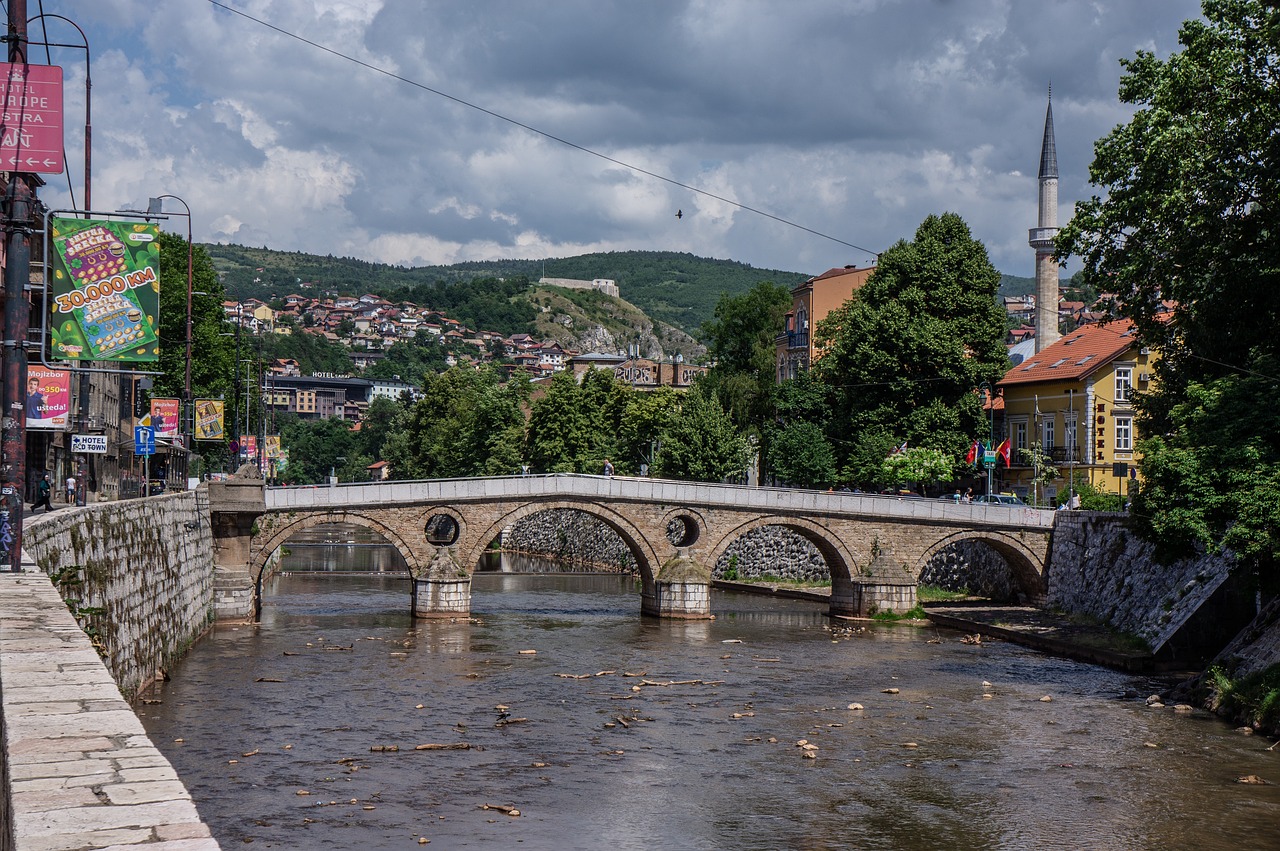
The streets of Sarajevo in 1914 saw an event that would change the course of world history. The assassination of Austro-Hungarian Empire’s Archduke Franz Ferdinand sparked World War I, leaving millions dead and making four empires disappear.
“This downtown street corner, just a few meters from the Latin Bridge over the river Miljacka, is hugely significant for the history of Sarajevo and the entire world,” says Samra. “This is where the assassination of Archduke Franz Ferdinand and his wife took place on June 28, 1914,” says Samra. “Footprints on the pavement mark the exact place where the shots were fired that changed the course of world history.”
“The Latin Bridge itself is dates back from the Ottoman period, built in 16th Century. It was so named because of the Catholic neighborhoods on the left bank of the river. Catholic people spoke Latin, so simply the people of Sarajevo would call them Latins.”
You may be interested to read: Insight investigates: What is greenwashing, and how to avoid it?
The changing face of the 20th century
The Austro-Hungarian Empire collapsed in 1918 and Bosnia and Herzegovina became a part of what was later known as the Kingdom of Yugoslavia. During WWII, Sarajevo was under Nazi occupation before it was liberated in 1945 by Marshal Josip Broz Tito. Sarajevo and Bosnia and Herzegovina then became part of the Socialist Federal Republic of Yugoslavia.
As Yugoslavia crumbled in 1992, Bosnian Muslims and Bosnian Croats (mostly Catholic) voted for Bosnia and Herzegovina’s independence. But Bosnian Serbs, mostly Orthodox and backed by Serbia, wanted Sarajevo and other Bosnian territories to be part of a greater Serbia.
War broke out and Serbs, under the leadership of Radovan Karadzic, laid siege to the capital Sarajevo. Lasting until 1995, this was the longest siege in modern European history through the 20th century and a very dark period in the history of Sarajevo and the history of Bosnia and Herzegovina. A total of 13,952 people were killed during the siege, including 5,434 civilians.
In 1995, the Dayton Accords ended the siege and war, creating a multi-layered government that includes a federation of Bosnian Muslims and Bosnian Croats that shares power with a republic of Bosnian Serbs.
A city rebuilt
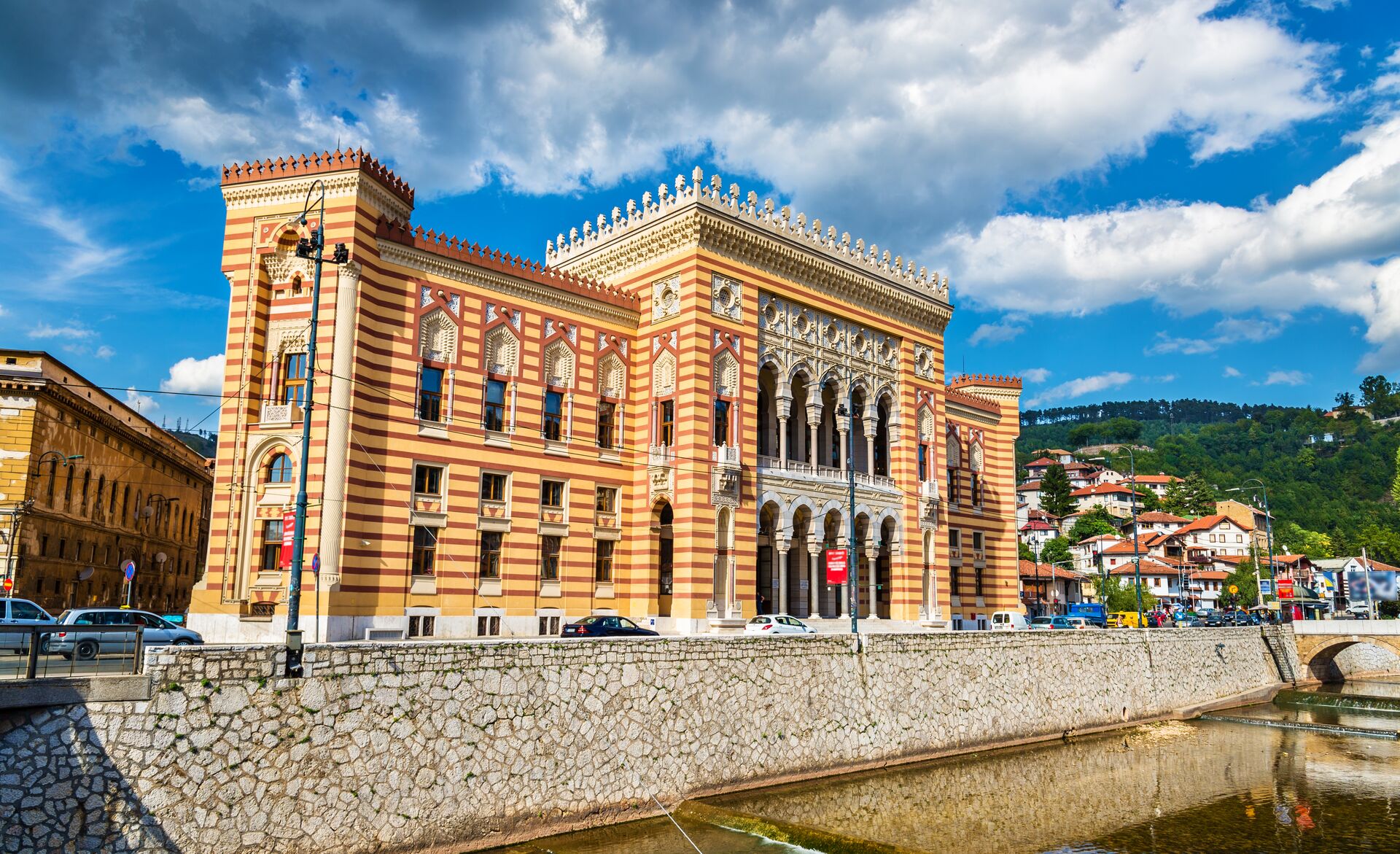
Sarajevo City Hall is one of the city’s most striking buildings that was destroyed during the war. A defining building of the Austro-Hungarian period, like others it has been painstakingly rebuilt, as an exact replica.
“In terms of post war reconstruction, the whole process started immediately after the war in 1996, funded by foreign donations,” says Samra. “Reconstruction is still ongoing and you will see some evidence from the war while you’re in Sarajevo. However, the city looks completely different now. Not too many of the worst scars remain, but there are definitely some, so it’s still an ongoing process.
Museums and exhibitions let no one forget, but this vibrant, bustling city now bursts with smiles and wildflowers. “Come to Sarajevo, visit us and we promise you will be surprised,” Samra says. “A treasure trove of history, rich Mediterranean climate, outstanding cuisine and the warmest of welcomes awaits.”
To experience the magic of Sarajevo for yourself, along with exceptional hotels and delicious dining, take a look at our Eastern Capitals & The Dalmatian Riviera and Treasures of the Balkans premium guided tours.
